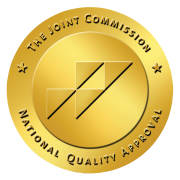Can You Suffer From ADHD and Bipolar Disorder?
Attention-deficit hyperactivity disorder (ADHD) and bipolar disorder symptoms overlap and are often difficult to differentiate. Confusing a diagnosis more, ADHD and bipolar disorder can be co-occurring. However, working with a professional prevents missing a diagnosis of ADHD and bipolar disorder.
How Can You Have ADHD and Bipolar Disorder?
ADHD and bipolar disorder symptoms include restlessness, being easily distracted, impulsivity, and poor concentration. Because ADHD is more common and the symptoms are similar, bipolar disorder is often undiagnosed.
Furthermore, ADHD is generally diagnosed in childhood, while bipolar disorder is typically diagnosed in teens and adults. Because ADHD is usually the initial diagnosis and symptoms are so similar, any signs of bipolar disorder are blamed on ADHD.
What is the Difference Between ADHD and Bipolar Disorder?
ADHD
ADHD is a neurodevelopmental disorder typically affecting children. However, many adults are also struggling with ADHD. Signs and symptoms of ADHD include:
- Trouble focusing
- Forgetfulness
- Excessive fidgeting
- Interrupting or talking too much
- Impulsive behaviors
- Risk-taking
- Trouble forming relationships
Bipolar Disorder
Bipolar disorder is a mental health disorder causing extreme mood swings. People can experience mania (extreme highs) or hypomania (extreme lows). Daily life and living with bipolar disorder can be challenging because people can flip from one mood to another or be free of symptoms.
While there are various types of bipolar disorders, there are two distinct episode types – mania and hypomania. Mania is more severe, causing issues at school, work, social gatherings, and in relationships.
Although they are different types of mood swings, the symptoms are the same and may include:
- Abnormally jumpy and upbeat
- Highly energetic
- Extreme agitation
- Exaggerating self-confidence or well-being
- Sleeping less
- Overly talkative
- Racing thoughts
- Easily distracted
- Poor decision making
Mania may also cause a break from reality and require hospitalization.
What are the Causes of ADHD and Bipolar Disorder?
Although ADHD and bipolar disorder share similar symptoms, what causes these disorders are different. While research continues on the causes, known risk factors increase the risk of developing these disorders.
ADHD
Studies show ADHD is often genetic, but the cause is still unknown. Environmental factors, such as nutrition, social environment, and brain injuries, may increase the risk of developing ADHD.
In the past, professionals thought sugar, too much television, and family stress played a part. And while these factors can exacerbate symptoms, they have been debunked as causes.
Bipolar Disorder
Research shows having a close relative, such as a parent, with bipolar disorder increases a person’s risk of developing the disorder. However, it is thought not to be just one gene but a collection of responsible genes.
Furthermore, brain structure and function may increase the development of bipolar disorder. Studies have shown issues with how nerve signals are transmitted in the brain, and the balance of brain chemicals play a role in bipolar disorder.
Why Can You Have ADHD and Bipolar Disorder at the Same Time?
It is relatively common for a person with bipolar disorder to have ADHD. Almost 70 percent of those with bipolar disorder have co-occurring ADHD. Furthermore, 20 percent of people with ADHD receive a diagnosis of bipolar disorder as teens and adults.
According to the Journal of Psychiatry and Neuroscience, children whose parents have bipolar disorder have a higher occurrence of ADHD and eventually bipolar disorder.
Diagnosing ADHD and Bipolar Disorder
The Diagnostic and Statistical Manual of Mental Disorders or the DSM-5 classifies ADHD and bipolar disorder as mental health disorders. It also lists the specific criteria used to diagnose both disorders.
ADHD
Generally, children receive a diagnosis of ADHD between the ages of 5 and 11. If an adult is being evaluated for an ADHD diagnosis, their symptoms must have been present by age 12. Often, a pediatrician diagnoses ADHD, but psychologists, psychiatrists, or primary care doctors can also diagnose ADHD.
Bipolar Disorder
Typically, bipolar disorder develops in older teens and adults. There are various types of bipolar disorder, and each has its criteria for diagnosis. It can take a few years to get a diagnosis since it’s based on a history of mania and depression symptoms, medical history, and tests to rule out any physical issues causing the symptoms.
What are 6 Factors that Differentiate ADHD and Bipolar Disorder?
Because ADHD and bipolar disorder have similar signs and symptoms, the risk of misdiagnosis is high. As a result, professionals often use the following six factors as a guide.
1. Age of Onset
ADHD is a chronic or lifelong disorder with symptoms appearing before age 12. Although children can have bipolar disorder, it is rare. Most people experience their first bipolar episode after age 18.
2. Consistency of Episodes
Because ADHD is a chronic disorder, it is always present. Bipolar episodes come in waves with periods of “normal” moods.
3. Mood Triggers
A person with ADHD has passionate, emotional reactions to life events. Intense happiness and excitement occur with happy events. Likewise, unhappy events such as rejection, criticism, and teasing cause extreme sadness. However, those with bipolar disorder can have mood swings and emotional episodes without being triggered by any connection to life events. Here we cover ten bipolar triggers and how to manage them.
4. Speed of Mood Changes
The mood changes in ADHD are instant because life events trigger them. While the shift in mood is valid, it’s the intensity that becomes abnormal. Because they come on rapidly, episodes are often called “snaps” or “crashes.” On the other hand, bipolar episodes are typically untriggered and may take days to fluctuate.
5. Duration of Episodes
Despite the diagnosis, severe loss and rejection often cause weeks of hypomania. The mood swings of ADHD are typically measured in hours. While bipolar episodes must last at least two weeks according to the DSM-5.
For example, for a diagnosis of “rapid-cycling” bipolar disorder, a person must experience four mood shifts in a year. However, people with ADHD may experience four or more mood changes every day.
6. Family History
Both ADHD and bipolar disorder run in families. However, people with ADHD have multiple cases of ADHD in their families. On the other hand, bipolar disorder generally has fewer genetic connections.
What is the Treatment for ADHD?
ADHD is a chronic disorder which means there is no cure. However, treatment options help manage symptoms and develop coping skills.
Since ADHD is often seen as a childhood disorder, adults may avoid a diagnosis. Unfortunately, this can seriously affect work, relationships, and overall well-being. But, a combination of medications, behavioral therapies, and lifestyle changes can improve daily life.
Medications for ADHD
Two medications have approval from the Food and Drug Administration (FDA) for treating ADHD – stimulants, and non-stimulants. Stimulants are the most commonly prescribed, with 70-80 percent of children seeing fewer symptoms on stimulants, according to the Centers for Disease Control and Prevention (CDC).
Common stimulants to treat ADHD include:
- Adderall
- Concerta
- Desoxyn
- Dexedrine
- Focalin
- Vyvanse
Non-stimulant medications may be used when stimulants produce unwanted side effects. They may also be used when people have other health issues or fear addiction. Common non-stimulants for ADHD include:
- Strattera
- Wellbutrin XL
- Intuniv
- Catapres
Sometimes, a person may use both stimulants and non-stimulants to manage ADHD. This combination improves behavior and cognitive function over stimulants alone for some people.
What Therapies Help Manage ADHD and Bipolar Disorder?
The therapies used to manage ADHD, and bipolar disorder varies depending on age. Most therapies help people understand their disorder, its effects and help change their thinking and behaviors.
Psychotherapy
Older children and adults find meeting with a therapist a safe space to share their feelings. Psychotherapy or individual therapy helps develop coping skills and address co-occurring mental health disorders such as bipolar disorder.
Behavioral Therapies
Some teachers are specially trained in behavioral therapies to help children replace unhealthy behaviors with posit ones. Tools such as goal setting, reward systems, and teaching organizational skills can reinforce positive behaviors.
Therapies including cognitive behavioral therapy (CBT) and Eye Movement Desensitization and Reprocessing (EMDR) therapy, are useful in treating ADHD and bipolar disorder adults.
CBT and EMDR help people process their negative thought patterns and behaviors, allowing them to heal and cope with their conditions and the symptoms that occur as a result, such as emotional distress. Processing these patterns changes a person’s perspective, allowing them to make better decisions and improve their relationships.
What Lifestyle Changes Can Improve ADHD and Bipolar Disorder
Although medications and various therapies are beneficial in managing ADHD and bipolar disorder, lifestyle changes can help balance mood and minimize episodes. Healthy eating, exercise, and good sleep hygiene can prevent relapses.
Eat Healthy Foods
Omega-3 fatty acids are crucial for brain health. While vitamin D and B can help fight hypomania. So, eating various foods, including fresh produce, whole grains, lean meats, tuna, and salmon, is vital in managing ADHD and bipolar episodes.
Good Sleep Hygiene
ADHD and bipolar disorder can make sleep challenging. Mania can cause people to sleep very little. At the same time, hypomania can make it difficult to get out of bed. On top of it all, a lack of sleep can trigger mood changes.
Tips to sleeping better include:
- Going to bed and waking up at the same time every day
- Keep your room cool and dark
- Avoid screen time (computer, tv, and phone) before bed
- Take a bath, read a book, or do another relaxing activity
- Avoid large meals at bedtime
Get Regular Exercise
Although exercising too hard or too often can trigger mania, regular exercise can ease depression and changes in mood. For example, riding a bike or taking a walk in the fresh air and sunshine is proven to be a mood booster.
Can Alternative Therapies Manage ADHD and Bipolar Disorder?
Adding alternative therapies to your medication and behavioral therapies can enhance the benefits of treatment. Adding yoga and meditation to your daily routine can help balance your thoughts and feelings while minimizing mood changes.
Yoga and Meditation
Yoga and meditation can calm and relax your mind. They can also boost concentration and focus while lowering blood pressure, anxiety, and mood swings of ADHD and bipolar disorder.
Many people believe that yoga and meditation take an hour or more to do. However, when a person is experiencing mania or hypomania, taking five minutes to find a quiet spot can help them regain control and balance emotions.
Treating ADHD and Bipolar Disorder at Lido Wellness Center
Are you wondering if you struggle with ADHD, bipolar disorder, or both? Have you tried treatments, but nothing worked? At Lido Wellness Center, our mental health approach gives people access to the proper resources they need to take control of their mental and emotional health. We develop customized individualized treatment plans to help you get your life back. Contact us today to find out more.
References:
https://link.springer.com/article/10.1007%2Fs40474-013-0004-0
https://www.nimh.nih.gov/health/topics/bipolar-disorder
https://www.nimh.nih.gov/health/topics/attention-deficit-hyperactivity-disorder-adhd#part_2289




